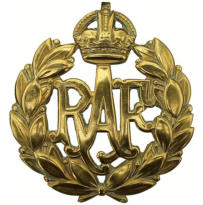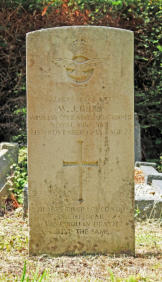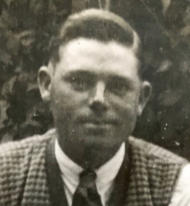Dennis Bill’s Family History





This page was originally created for the WW1 centenary but I now intend to included all known family war
deaths.
World War One
The BENNETT brothers
Walter Sam BENNETT
Thomas William BENNETT
Reginald George BENNETT
Bertie Harold BENNETT
Archibald WISEMAN
William CHALMERS
Henry W R CHALMERS
George Francis CHALMERS
James Edward CHALMERS
Samuel William Audley TRUCKLE
George Henry GRAINGER
William Henry GRAINGER
Michael RIVERS
World War Two
Francis Edward WISEMAN
William James BILL
Jack Coode BATE
The BENNETT brothers
When I first found my connection to the Bennetts of Tollard Royal in Wiltshire about 15 years ago I visited the village and its church, St Peter ad vincula. Inside the church was a memorial manuscript framed and hanging on the wall. It showed that the village lost thirteen young men in the conflict and four of those were BENNETTs. There were a lot of BENNETTs in the church registers so this didn’t surprise me. It wasn’t until I began this research project that I realised that the four were brothers. Their parents Thomas and Annie BENNETT had to cope with loosing four of their five sons, between the ages of 19 and 30. It’s an unimaginable tragedy to strike one family from such a rural backwater. Both Thomas and Annie lived to old age so they carried the mental and emotional scars for a long time. The sons’ individual stories are told below. back to topPrivate Walter Sam BENNETT, 6
th
Battalion, Queen’s Own (Royal West Kent) Regiment,
A/10457
Walter was born in 1885 the second son of Thomas and Annie Bennett of Tollard Royal. He was the first of their four sons to be killed in the conflict. He had left Tollard Royal before 1911 and was working as a gardener in Kent when he enlisted at Bromley on 20 Oct 1915. The Battalion embarked for France on 26 Apr 1916 to serve with the 6th Division. Just two days after the infamous first day of the Battle of the Somme the 6th Battalion were in action close to Bresle, near Albert, when Walter was one of 375 ‘other ranks’ casualties. He has no grave but is remembered on the Ovillers Military Cemetery near Albert. The Battalion War Diary records the day: 3 Jul 1916, Waltney Street Trench At 12:15 am received orders for the attack, Battalion left front, Battalion 6th Buffs in support. At 3:15 am assaulted the German trenches, A & C Companies in front who had to take the first line, B & D Companies behind to take the second line and took them with very little losses, B & D charged past them but only a few elements of their two Companies reached the second line. A counter attack by the Germans drove back the remnants of the Battalion as the supporting Battalion who had lost direction gave no assistance. Casualties: 3 Captains killed, 11 subalterns wounded, 5 subalterns missing. Other Ranks: killed, wounded and missing - 375 - Strength of Battalion going in to action 617. French Heavily shelled. Relieved by 7th East Surrey Regt and marched to Bozincourt Reserve Trenches to rest and reorganise. His parents weren’t the only people left grieving as he left behind Ethel Flora his wife of 10 weeks. back to topPrivate Thomas William BENNETT, 2
nd
Battalion Hampshire Regiment, 29510
Thomas, the fourth son of Thomas and Annie Bennett, was born in 1894 in Berwick St John where his father was working at the time. There is no surviving service record so although Soldiers Who Died in the Great War tells us that he enlisted in Southampton we don’t know when. His service number (29510) suggests that he enlisted in late September or early October 1915 (29602 enlisted on 4 Oct 1915). This would mean that he was posted to France sometime after the 2nd Battalion landed at Marseille from Gallipolli in March 1916 and moved to the Western Front. It was here at the Battle of Albert that Thomas was killed on 10 Sep 1916. The Battalion War Diary records that on 10 Sep 1916 they were in trenches near Ypres and - “Casualties; Other Ranks, 1 killed, 3 sick to Hospital”. No action was reported on that day nor for the previous day but on the 8th September is this entry: On the night of 8/9th the Battalion moved up to the front line trenches E of YPRES taking over the same portion of the line as had previously been held during August from the 1st Essex Regiment. The frontage was about 800 yards extending from T II b 7.8 to I 5 B 1 3 (trench references). The dispositions for holding the line were as follows: two Companies Y and W were in the firing line. X being in support in I 4 d, and Z in Battalion Reserve in the POTIJZE defences at I 4 c 2 8. Battalion Hd Qtrs being at I 4a 4½ 4½. The work in progress at this time consisted of the improvement of the defences and the provision of better communication, principally lateral. To the right work was done on the support line XI and XR and the extension of Haymarket towards Battalion Hd Qtrs. Casualties: 4 sick to hospital. The following day (9 Sep) it was recorded that Lieut EFW Hayward was slightly wounded but still at duty and 4 Other Ranks were sick and sent to hospital. From these reports it would appear that the Regiment was not in action but that Thomas’ death on the 10th was probably due to a sniper whilst working on trench maintenance as described in the Diary. He was buried in Vlamertinghe Military Cemetery in West-Vlaandered, Belgium, just west of Ypres. back to topLance Corporal Reginald George Bennett, 134
th
Company, Machine Gun Corps, 33138,
Reginald, born 1897, was the youngest son of Thomas and Annie Bennett of Tollard Royal and Berwick St John. His service record has not survived so we don’t know when he enlisted but we do know that he first enlisted in the Hampshire Regiment as soldier No 1792 but at some point he transferred to the 134th Company, Machine Gun Corps (MGC) The 134th Company MGC were part of the 19th Infantry Brigade which in turn was part of the 7th (Meerut) Division of the Indian Army. In 1915 the 7th Division were removed from the Western Front to reinforce the Army in Mesopotamia (Iraq). They were eventually absorbed into the Mesopotamia Expeditionary Force (MEF) in 1917. The Ottoman Army had been gradually driven back towards Baghdad between 1915 and early 1917 and the day Reginald is recorded as being killed (22 Feb 1917) the MEF were less than three weeks from the capture of Baghdad and 15 000 Ottoman soldiers. He is buried in Amara War Cemetery, Iraq, plot XVII.H.13 From the Army Registers of Soldiers’ Effects, 1901-1929 (National Army Museum) we know that his Mother Annie was paid £8 13s 1d (£8.66) on 27 May 1918 and a further £5 10s (£5.50) on 27 Oct 1919. back to topPrivate Bertie Harold BENNETT, 14
th
Battalion Hampshire Regiment, 32568
Bertie Harold Bennett was born in 1884, the eldest son of Thomas and Annie Bennet of Tollard Royal, Wilts. His service record has not survived so we have no idea when he enlisted. The 14th (Service) Battalion was formed at Portsmouth on 3 Sep 1914 and was adopted by the War Office on 30 May 1915. They landed at Le Havre on 6 Mar 1916. On the day that Bertie went missing they launched an attack on the German trenches hear Hollebeke, on the south side of the Ypres Salient. The War Diary records: 26 Sep 1917 – Shrewsbury Forest Battn attacked at 5:30am. 1 st objective being Tower Hamlets and 2 nd objective Tower Trench. Heavy casualties through MG fire. Objectives were reached and held and consolidation carried out on own side of Tower Trench. Casualties, Maj Goldsmith died of wounds, killed Capt T R Nicholls, Lieut Bainbridge, 2 nd Lieut B G Wilson, wounded 2 nd Lieut H P Sangster, 2 nd Lieut R N Butt, 2 nd Lieut Barras, 2 nd Lieut Thomas. Other ranks; 41 killed, 113 wounded, 30 missing. Heavy shelling and sniping gunnery all day. He is remembered on the Tyne Cot memorial and on the Memorial in the church of St Peter ad vincula in Tollard Royal. He left behind his wife of six years, Mabel Mary. back to topCorporal Archibald WISEMAN, 1
st
Battalion Seaforth Highlanders & The Highland
Battalion, 3/7144
He was born in 1888, the third son of Charles Thomas and Eliza (nee Rivers) Wiseman of Bisterne, near Ringwood, Hampshire. Charles worked on the Bisterne Manor estate as a gardener. By 1911 Archibald had made a giant leap into London society, albeit in a humble position. He was living in the fashionable Wilton Crescent in Belgravia as Footman (Domestic) to Lady Caroline Gordon Lennox, the unmarried daughter of the Duke of Richmond. There were another ten servants in the house plus a valet for a visiting nephew, Major Lord Esme Gordon Lennox of the Scots Guards. Quite how Archibald came to this position is unknown as is why he went to Kingston on Thames to enlist in the 1st Battalion, Seaforth Highlanders. His service record has not survived but his medal card shows that he joined the 1st Battalion on the Western Front on 15 May 1915. In 1916 the Battalion moved to Mesopotamia (Iraq) and with 2nd Battalion Black Watch became The Highland Battalion. They were immediately involved in an action that became known as the First Battle of Kut. Its aim was to relieve the 8000 strong British and Indian Garrison at Kut al Amara, which had been besieged since 7 Dec 1915. On 28 Apr 1916, just over three weeks after Archibald’s death, the Garrison surrendered to the Ottomans, an outcome that historians have called “The worst defeat for the Allies in World War 1”. The War Diaries of the Highland Division give some sense of the initial action: 5 Apr 1916 At 11pm the Commanding Officer received orders for a night march by 28 th and 19 th Brigades at 1-30am on 6 th with a view to assaulting SANNAIYAT position at dawn. 6 Apr 1916 Marched at 1-30am in Mass of Platoons with left on Turkish communication trench FALAHIYIEH – SANNAIYAT, in following order; Highland Battn on left, directing, 28 th Punjabis, then 28 th Brigade. In rear, on left, 125 th Rifles, 92 nd Punjabis, then 28 th Brigade. Progress very slow over unknown ground much impeded by 13 th Division wandering in small parties across front and through column. Reached FALAHIYIETH trenches about 2-30am. These proved great obstacle as nobody had ever seen them. A Patrol was sent out under 2 nd Lieut N T Macleod which did good work, getting in touch with hostile patrol and keeping touch till dawn. At 4-40am we had progressed 4500 yards the total distance being 6900 yards by one map and 5000 yds by another. A surprise at dawn was out of the question but the column, under Major Gen Kemball, continued its course and formation. At 5-10am, when practically broad daylight, the order was received to assume daylight formation on the march, but the 25 th Brigade continued to advance in a dense mass without machine gun or artillery support, against an entrenched position which had never been located. Brief orders were issued by the Commanding Officer to Coy Commanders; 1 Platoon per Coy in Firing Line and 1 in support, remainder in Reserve 300 yards back, rear formations to halt till front had shaken out and got their distance. Even this formation was thought too slow and orders were received from OC Column to push on and get in line with 28thBrigade now 300 yards in front. The Firing Line platoons were just abreast of 28 th Brigade when the storm burst. Heavy rifle and Machine gun fire from front, shells (our own) from right bank of river into rear of column. The attack was stopped dead, the 28 th Brigade losing practically the whole of the leading two Regiments. In a few moments the leading platoons of the Battn were covering practically the whole front, assisted by the 2 nd Leicestershire Regt on the marsh bank. Nothing remained but to dig in. Three lines were dug and held throughout the day the Battalion was withdrawn at dusk. A most disappointing action in which many valuable lives were lost to no purpose. (my enbolding) The NCOs and men under the Platoon Commanders in the Front and Second line did splendid work, both under the sudden emergency of blundering into an unseen foe and afterwards in consolidating and holding the front. Throughout the day the enemy kept up a heavy fire and used Artillery with effect. Casualties: BO ORB 2 nd Black Watch 1 st Seaforth Hrs Killed 1 24 6 1 18 Wounded 10 159 1 57 9 102 Missing 3 1 2 Sick 1 1 Total 11 187 1 65 10 122 Archibald is remembered on the Basra Memorial, he was 28 years old. The Basra Memorial was originally on the west bank of the Shatt-al-Arab, north of Basra but the Memorial has been moved to a site on the road to Nasiriyah in the middle of what was a major battleground in the first Gulf War. He is also remembered on the Ringwood War Memorial. He was entitled to the Victory Medal and the 1915 Star. back to topPrivate William Chalmers, 2
nd
Battalion Hampshire Regiment, 3/4118
William was born in 1899, the eldest child of William H T and Elizabeth Chalmers of 37, Tipnor Street, Stamshaw, Portsmouth. His service record has not survived so we don’t know exactly when he enlisted but his family’s entry in the National Roll of the Great War states that “he joined-up in August 1914”. The 2nd Battalion returned to UK from India in December 1914 and embarked for Gallipoli on 29 March 1915 arriving at Cape Helles, Gallipoli on 25 April 1915, having travelled via Egypt. At 3:00am on 17 July the Regiment embarked ship for Port Mundros, Lemnos, then on 28 July embarked ship again for Gully Beach. They spent a few ‘quiet’ days preparing for an attack on 6 August, the day that William was reported killed. This attack was intended to be a diversion from the main landings at Suvla Beach about 30 Km to the north. The War Diary records: 6 August, Gully Beach Marched up mule track and took over trenches from Royal Fusiliers, heavy gun fire up to 1pm. Bombardment from 2:15pm until 3:50pm. Attack launched, first line advanced at proper time, attack did get home, majority of first line killed or wounded. Capt B S Parker led attack of second line, killed soon after leaving trenches, attack failed. Failure of attack attributed to the number of machine guns in front and flanks of position, these guns had not been knocked out in the bombardment and as soon as the attack was launched opened very heavy fire. Strength of Battalion on going into action; Officers 27, Other Ranks 846. Casualties Officers 22, Other Ranks 439 including 34 killed and 228 missing. William was entitled to the 1914-15 Star and General Service and Victory medals and he is remembered on the Helles Memorial in Turkey and on the Guildhall Cenotaph in Portsmouth. back to topPrivate Henry William Robert CHALMERS, 14
th
Battalion Hampshire Regiment, 12593
Henry was born on 12 May 1897 the eldest son of Henry and Isabella Chalmers of 2, Rudmore Place, Portsmouth. His service record has not survived and, like James E Chalmers, his Medal Index Card does not record his entry into a theatre of war or his death in action. The 14th (Service) Battalion was formed at Portsmouth on 3 Sep 1914 and was adopted by the War Office on 30 May 1915. Presumably Henry enlisted before the Battalion moved from Portsmouth in Oct 1915. They landed at Le Havre on 6 Mar 1916 and Henry was killed in action on 30 Jun 1916. The 14 th Hampshires were part of the 116 th Brigade (along with the Royal Sussex Regt) and on this day were involved in what became known as the Battle of the Boar’s Head. The Boar’s Head was a salient held by the German Army near Richbourg L’Avoue in Northern France (close to Neuve Chappelle, between Bethune and Lille). The British attack was one of over 300 raids undertaken as support for the Fourth Army which was just about to trigger the Battle of the Somme (1 Jul 1916). The intention was to prevent the Germans from moving reinforcements south to the Somme and to provide ‘battle hardening’ experience for the novice regiments. The 14 th Btn War Diary records the action: At Ferme du Bois, Right; 30 Jun 1916 At 2:30am our artillery commenced an intense bombardment of the enemy front line trenches on the Boer’s Head to 3:15am and then lifted on the enemy support trenches and the attacking units 12 th & 13 th Royal Sussex Regiments went over in waves, including Signalling and RE. The 11 th Royal Sussex Rgt were finding carrying parties, strong Blaching (?) Parties. The 14 th Btn Hampshire Regt were in support. Our A Coy moved up to the line and took over the right Coy front at 12 midnight the right of 29 th & 30 th . Our B Coy moved up to Guards Trench Right and Bute Street. Our C Coy were in reserve at Richbourg St Vaast and took over the Centre Coy front after the attack. Our D coy were in support by Windy Corner in front of Btn HQ in Edwards Road and they took over the left Coy front when ordered to by the Commanding Officer. The attacking units reached the enemy support trench & signalling was connected up from the enemy front line to our own front line. The enemy retaliation with artillery was so terrific that our attacking units were forced to withdraw under heavy fire back to our own front line, which was breached in many places from the enemy fire. Our Btn casualties were two officers wounded, Lt E M Allen &2 nd Lt H P Sangster. Other ranks 40 wounded and 5 killed, 3 missing. Unusually the names of the 5 Other Ranks killed were entered in the right margin of the diary page, including “12593 Pte Chalmers H” In all there were nearly 1000 casualties that day with the three Royal Sussex Regiments involved suffering the loss of 17 officers and 349 men in just five hours. About 100 men had been taken prisoner. The attack has been described by historians as a ‘fiasco’ and a ‘disastrous exercise’. Henry is buried in the St Vaast Post Military Cemetery, Richebourg-L’avoue and is remembered in the Rudmore Parishioners’ memorial now in St Agatha’s Church and on the Portsmouth Guildhall Cenotaph, along with his 2nd cousin James Edward Chalmers. back to topPrivate George Francis CHALMERS, 15
th
Battalion, Hampshire Regiment, 20994
Born about 1877 he was the second son of James and Eliza Chalmers of Stamshaw, Portsmouth. He was working as a skilled labourer in the Gas Works in 1911 but no record exists of his enlistment. His high service number (20994) might suggest that he did not enlist early in the War, he might have been in a reserved occupation in the Gas Works but he does not appear in the surviving Portsmouth Military Tribunals who would have granted such an exemption. The 15th Battalion were formed at Portsmouth on 5 Apr 1915 and entered France in early May 1916. On the day he is recorded as being killed, 7 Oct 1916, the 15th Btn were on the Somme near Mametz (near Albert). They were to be part of the Reserve Army’s action known as the Battle of Ancre Heights (1 Oct-11 Nov 1916). The War Diary records trench fighting, mostly with bombs (hand thrown) at close range. After the morning fighting it records: On the afternoon of the 7 th when our attack in front of Gird trench was held up by heavy machine gun fire the enemy attempted to counter attack by bombing down that portion of Gird trench which ran into our front line. Owing to the heavy casualties we had suffered the enemy drove us step by step down Gird trench towards our original front line and it looked almost as if they would eventually penetrate into our trench. George is remembered on the Thiepval Memorial along with over 72 000 other men with no known grave. back to topPrivate James Edward CHALMERS, 7
th
Battalion Prince Albert’s (Somerset Light
Infantry), 38681
James Edward Chalmers was born in 1899 in Rudmore, Portsmouth, the eldest son of James Edward and Rosina Chalmers. When conscription was introduced in 1916 he was working as a Bargeman for his first cousin, once removed, John James Chalmers-Stevens, who operated out of Rudmore Wharf collecting gravel & ballast from the Solent with a small fleet of barges, mostly operated by members of the wider Chalmers family. Following the introduction of conscription in Jan 1916 it was possible to obtain an exemption on the grounds of performing civilian work of national importance. On 30 Jun 1916 a local Military Tribunal initially accepted that he was a “certified mate of barge” and granted a conditional certificate exempting him from conscription on the condition that he enrol with the Volunteer Training Corps (home defence militia). Many of these early exemptions were later rescinded and he must have enlisted with the Somerset Light Infantry some time in the late summer of 1916, his service record has not survived. For some reason his Medal Roll Index Card does not record that he entered a theatre of war nor his death in action. He is, however, listed in Soldiers That Died in the Great War and on the Commonwealth War Graves Commission web site where he is recorded as having died on 21 Jan 1918. It also states that he is remembered on the Tyne Cot Memorial, indicating that his body was not found or identified. James Edward must have moved to France in late summer 1916. Towards the end of 1917 the 7 th Battalion, as part of the 21 st Division, were involved in the Battle of Cambrai. According to the Btn War Diary on the date of his death (21 Jan 1918) they were at Canada Tunnels “in support” and the following day moved to Chippewa Camp “in Reserve”. This makes it difficult to believe that he died on 21 Jan as no action or casualties were recorded on that day. In the eight days prior to his death the Btn had spent two short periods in the front line, between 14-16 Jan and 18-19 Jan but on neither occasion were any casualties recorded in the Diary. Prior to that, on 28 Nov 1917, the Battalion had moved to the front line to replace the 7 th Btn King’s Own Yorkshire Light Infantry. The opening action at Cambrai on 30 Nov 1917 was described thus in the War Diary: At 7am on 30 Nov: Enemy put a heavy TH barrage on the old outpost line. Between 7 and 7:30 enemy attacked in strength and apparently broke through line on right. Btn HQ immediately stood to and lines high ground near Btn HQ. Many hostile aeroplanes were now overhead flying at about 50-100 feet high firing at Infantry. Number of aeroplanes estimated at about 45. Enemy now found to be attacking Btn in rear and Btn on right retiring at same time. Enemy seen to be advancing in mass from high ground between MASNIERIES and CREVECOEUR and many waves advanced on outpost line from western side of canal bank. Lewes Guns were immediately brought into action and fired until all magazines empty. Enemy continued advance from front and right flank and front Coys withdraw A & B – being supported by support Coys & Btn HQ A general withdrawal was then made to the Brown line, platoons mutually supporting each other, where the enemy were held. Casualties –Officers; 12 wounded or missing: Other Ranks, 2 killed, 158 wounded and 172 missing. If James was one of the missing in this action why was his death not recorded until 21 Jan over seven weeks later, unless there is some Army procedure that records the missing as dead after a certain period has elapsed. He was entitled to General Service and Victory medals. He is remembered on a memorial plaque to Residents of Rudmore (see above). He is also remembered on the Portsmouth Guildhall Cenotaph, along with his 2nd cousin Henry Chalmers. back to topLance Corporal Samuel William TRUCKLE, 14th (Labour) Battalion Devonshire
Regiment, 37570 and Labour Corps, 263187
Samuel was born at Basingstoke, Hants in 1888 to Frederick William and Adelaide Truckle (nee Gunn). At some point in the 1890s the family moved to Portsmouth and by 1911 when in his early 20s he was the Advertising Manager at the new Hippodrome Music Hall in Portsmouth. His service record has not survived but his regimental number for the Devonshires suggests that he enlisted in late 1915-early 1916 but the family’s entry in the National Roll of the Great war says he joined in August 1916. It goes on to describe his service on the Western Front from October 1916 including service at the Somme, Messines, Ypres and Passchendaele. He suffered from severe shell-shock and was hospitalised back to England to receive treatment but died on 10 October 1918 at the age of 30. The 14 th (Labour) Battalion was transferred to the Labour Corps as the 154 th and 155 th Labour Companies in April 1917 but we don’t know how long he served in the Labour Corps until his repatriation. In 1920 his married sisters received his outstanding effects; Lizzie H A Wiseman receiving £8 4s 10d (£8.24) and Ethel May Harvey £2 14s 10d (£2.74). Interestingly in this document and in the medal roll for the Labour Corps he is listed as “Private, Labour Corps” so he may have been demoted due to his shell-shock even before he was hospitalised. He is buried in Kingston Cemetery, Portsmouth, under a Commonwealth War Graves headstone. back to topPrivate George Henry GRAINGER, 1st Battalion Hampshire Regiment, 20773
George was born on 10 Nov 1897, the fourth surviving child of William Grainger and Lucretia Jane (nee Gladstains) and a younger brother of William Henry GRAINGER, see below. His Army Service record has not survived but other records indicate that he was injured at Ploegsteert, Belgium, on 1 June 1916, just a month after arriving in France, aged 19. The Admission and Discharge Book for No 18 General Hospital at Camier, (near Etaples) France, records that he had injuries to his left leg and elbow. He was part of the No 29, Ambulance Train that embarked on a Hospital Ship at Calais on 5 June 1916. His service number was erroneously recorded as 20772 in the Admission and Discharge Book, but there can’t have been two 19 year-old William Henry Graingers in the 1 st Battalion, Hampshire Regiment with consecutive numbers. There is no surviving record of when he returned to the Front but he was Killed in Action on 28 March 1918, near Arras. For that day the War Diary records: Casualties Killed :- 2 Officers and 33 Other Ranks Wounded :- 1 Officer and 74 Other Ranks Wounded & Missing :- 3 Officers & 7 Other Ranks Missing :- 76 Other Ranks Missing believed Killed :- 2 Officers & 2 Other Ranks Died of Wounds :- 1 Other Ranks. Attached is the Commanding Officer’s Report of Operations of 28 th March 1918 1 On the early morning of the 28th the Battalion was holding the Front System with 3 Companies in the Front, Support and Strong point line, and one Company and Battalion HQ in CADIZ TRENCH (front line, 2nd system). One Company of the 1st Rifle Brigade was tactically under my command in COOT TRENCH. The 2nd Seaforths (10th Brigade) were in touch on my right and the 2nd Rifles 12th Brigade in touch on my left. 2 About 3 a.m. on the morning of the 28th the enemy opened a heavy artillery bombardment, which fell for the most part behind the first system. 3 At 4.50 a.m. the enemy commenced to barrage our front and support lines with trench mortars and artillery, and by 5.30 a.m. all telephone communications with my front line companies was out, but communication was still kept up with my left and centre companies by visual. 4 The ?.O.W went up about 7.15 a.m. and the enemy was seen to be advancing in waves from his front line. Rifle, Lewis and Machine Gun fire was opened on to them and heavy casualties were inflicted. The withdrawal from the front and support lines to the Strong Point line had been completed according to orders before the infantry attack commenced. The attack was pressed very heavily and by 5.30 a.m. the enemy had advanced 200 yards beyond the left flank of my left Company and had penetrated into the Strong Point line, and my leading companies were compelled to withdraw. The left company falling back into JUTLAND TRENCH, the remnants of the centre company into CAMEL AVENUE, and the remnants of the right company to CORAL TRENCH (South of the railway); All the Officers and senior NCOs of my centre and right companies had by this time been either killed or wounded. 5 At 5.30 a.m. my line ran as follows:- CORAL TRENCH – COOT TRENCH – CAMEL AVENUE and CADIZ. I was in touch with the 10th Brigade on my right, but could not get touch with the 12th Brigade on my left. Meanwhile, the enemy were pressing on and working round my left flank, but my company in CADIZ held on for some considerable time and eventually, at about 1 p.m., as no touch could be obtained with the 12th Brigade on my left, I ordered them to withdraw to HAVANA. The enemy followed up very closely, and delivered strong bombing attacks along CLYDE, CADIZ and CAMEL TRENCHES. We had also obtained a footing in HAVANA Trench, but by this time a company of the 1st Riflle Brigade had arrived and at 1.15 p.m. delivered a counter-attack on HAVANA in conjunction with a bombing attack from the junction of CADIZ and HAVANA and the enemy were completely ejected. The bombing attacks along CLYDE, CAMEL and CADIZ were also repulsed. 6 The line was then readjusted, and at 1.45 p.m. ran as follows:- CORAL – COOT – CAMEL – CADIZ – HAVANA, and I was now in touch with the Seaforths on my right and the 2nd Lancashire Fusiliers on my left. 7 At about 3.15 p.m. I received a message from the company of the Rifle Brigade in COOT TRENCH to the affect that all troops South of the railway had withdrawn. This exposed my right flank and I immediately ordered a platoon from the company of the Rifle Brigade on my left flank to form a defensive flank along the railway embankment facing South, and sent back for assistance. 8 At 4.15 p.m. the enemy again delivered further bombing attacks down CLYDE and CADIZ trenches, but was repulsed and forced to withdraw, which they did over the open, and immediately came under fire of a Lewis Gun posted in HAVANA near its junction with CADIZ, and were almost completely wiped out. 9 From this time onward the situation became quiet and no further attacks were delivered. 10 A company of the 2nd Seaforths arrived about 7.30 p.m. and took over the defence of my right flank, and I withdrew the 2 platoons of the Rifle Brigade into COLT Trench as a local reserve. 11 At 8.30 p.m. orders were received to withdraw all troops to positions behind the Reserve line, 2nd System. The withdrawal commenced at 11.30 p.m. and was completed by 1.30 a.m. 29th, without mishap. back to topPrivate William Henry GRAINGER, 2nd Battalion, East Lancashire Regiment, 8199
William was born on 19 Oct 1888, the second son born to William Grainger and Lucretia Jane (nee Gladstains) of Rudmore, Portsmouth and elder brother of George Henry, see above. He was a regular soldier at the outbreak of WW1, having joined the East Lancashire Regiment sometime about 1906. His parents had split about 1894 and he was with an uncle & aunt in the 1901 census so he was probably looking for a job that would provide a home. The 2 nd Battalion East Lancs had moved to India in 1897 so presumably he enlisted in Portsmouth when the Regiment had a recruitment team in the area. He joined the Battalion at Wellesley Barracks in Mhow (now known as Dr Ambedkar Nagar) in Madhya Pradesh, about 500Km NE of Mumbai and is recorded there in the 1911 census. Later that year the 2 nd Battalion moved to South Africa and were in Wijnberg, a suburb of Cape Town, when they were recalled to the UK on the outbreak of the War in August 1914. They arrived in Southampton on 30 Oct 1914 and joined the 24 th Brigade in 8 th Division at Hursley, Winchester. They then embarked for Le Havre, landing there on 6 Nov 1914 as part of the reinforcements for the British Expeditionary Force. They moved quickly to the Front as William was entitled to the 1914 Star and clasp for those serving within range of enemy artillery before 22 November. In the Army Records William is recorded as having been Killed in Action on 5 Jan 1915. On this day the 2 nd Battalion were in the area between Neuve Chappelle and Armentieres. The War Diary reads: 5 th January 9:50-10:30 a.m. Enemy shelled a point on the road between Brigade HQ and left of No 4 section, also fired Mortar Bombs into No 3 section. In both cases without damage. The usual intermittent rifle fire continued throughout the day. 4 p.m. An Officer from B Lines pointed out to the Machine Gun on the left a new German trench in front of the centre of B Lines. The Machine Gun enfiladed this trench at a range of 550 yds and obtained hits. 8 p.m. – 9 p.m Trench Mortar fired two rounds at snipers house in front of advanced post in No 3 section and made one direct hit. The usual intermittent rifle fire continued throughout the day. There were no casualties recorded for that day but the day before on 4 Jan the diary reads: 4 th January There was the usual amount of rifle fire. Two of our Trench Mortars endeavoured to knock down snipers houses in front of the advanced post in No 3 section but without success. One of these Mortars in No 4 section was shelled in the afternoon but no damage was done. Rifle bombs were fired by the enemy into No 2 section in the salient but no damage was done. Generally speaking the water throughout the lines except No 4 section was subsiding. 5 Killed, 4 wounded. William has no known grave and is remembered on Panel 18 of the Le Touret Memorial, Pas de Calais. There seem to be two possibilities, either there is an error in the date in the records or possibly he was one of the 4 wounded on the 4 th but was subsequently killed in a first aid post or hospital zone on the 5 th and his body not recovered.Sergeant Michael RIVERS, 2nd Battalion, Leinster Regiment, 8020
Michael was born 10 August 1887 in Kilbride near Tullamore, King’s County (now County Offaly), Ireland. His service record has not survived but judging by his service numer he enlisted into the Leinster Regiment at Athlone, County Meath, about 1905-6, probably as soon as he was 18 years old. His WW1 Medal Record card suggests that he was promoted to Sergeant after arriving in France in 1914, but there is no mention of being a Corporal in between. He married Elizabeth Caskally in 1912 but unfotunately she died of tuberculosis two years later. In 1916 he married Bridget Galvin and the couple had a daughter Bridget, he was presumably home on leave during this period. On the 6 June 1917, the Leinsters were part of the 23rd Division and were at Ouderdom, between Poperinge and Ypres. The Battalion War Diary does not record daily casualties but on 5 Jun it records that 5 men were gassed, so it is possible that he was one of these and died the next day, or he may have been killed during the activities of the following day. The Diary reads as follows: OTTAWA Camp, nr Ouderdom 6 Jun 1917 12 MN – The Battalion left the camp and proceeded to assembly trenches in the vicinity of SWAN CHATEAU and CAFÉ BELGE. Battn HQ situated at Sheet 28NW H 30 a 1.4. Arrived about 2.15am. During the move enemy’s artillery very active using gas and tear shells, 5 men of Battn gassed. 7 Jun 1917 3.10 am - Our Artillery opened a terrific bombardment which lasted for about an hour. 12 Noon - Battn left assembly positions moving in artillery formation in the following order, BTD, CTA towards OLD FRENCH TRENCH & ECLUSE TRENCH. Arrived there about 2.15pm. Battn HQ was established at Z 32d 4.2 sheet 28 NW. Our artillery very active. 2.30pm - Battn left OLD FRENCH TRENCH & ECLUSE TRENCH & proceeded in artillery formation to O3 Central. Arrived about 3.30pm. Dispositions of the Battn C & D Coys OLD GERMAN front line in O3d. A & B Coys SOUTH and EAST of copse at O3 Central. Battn HQ at O3d 0.9. At 5.30pm C & D Coys were ordered to move forward about 300 yds & A & B Coys moved up into old positions of C & D Coys. Battn HQ in vicinity of RUINED FARM. Patrols pushed forward to keep touch with leading Battn 2/Lt R C Warner rejoined from Hosp. Later in the Diary: Casualties for Month of June Officers – wounded 4, killed NIL ORs – killed 35, wounded 144 Michael is remembered on Panel 44 of the Menin Gate Memorial in Ypres. He was one of 500 men from King’s County to give their lives in WW1. back to topSapper Francis Edward WISEMAN, 59 Field Company, Royal Engineers, 1864284
Frank, as he was known, was trained as a blacksmith and at the outbreak of WW2 he was working in HM Dockyard, Portsmouth. He enlisted in the Royal Engineers in 1939 and by February 1940 he was serving with 59th Field Company RE in Dunkirk, France. On 6 February 1940 he was in hospital with Bronchitis but was discharged back to his unit on the 10th. Plans to evacuate the trapped French and British forces from Dunkirk began in mid-May 1940 and were put into action on the 27th. By 4 June over 338,000 men had been evacuated and 68,000 captured or killed. Frank was reported missing on 28 June 1940 presumably after his Unit returned to UK, his body was never recovered. He is commemorated on the Dunkirk memorial. His wife Eleanor was left with two children under 5. Frank was the 2nd cousin of Jack Coode Bate (see below). back to topTemporary Sergeant William James BILL, Royal Air Force,
He enlisted with the service number 622834 on 10 October 1938, then presumably after basic training, he was posted to No1 Depot Uxbridge as an Aircraftsman 2 (AC2) and on 16 December the same year was sent to the Electrical & Wireless School. After completion of training there he was posted to Biggin Hill where he was promoted to AC1 on 1 November 1939 and ten months later to Leading Aircratsman (LAC). On 15 April 1941, he was promoted to Temporary Corporal, followed by a spell at Air Gunners School. There is no record of his temporary promotion being made permanent but on 4 September 1943 he was promoted again to Temporary Sergeant. It is possible that war losses had something to do with these promotions. On 21 November 1943 he was one of a five-man crew of a Short S.25 Sunderland seaplane, registration L2168, that took off from RAF Invergordon on a night training mission. Aparently one engine caught fire and the seaplane crashed into the Cromarty Firth near the vilage of Nigg. All five crew were killed and William’s was the only body recovered. He is buried under a Commonwealth War Grave headstone in Whitworth Road Cemetery, Swindon. William was my 1st cousin once removed. back to topSub-Lieutenant Jack Coode BATE, Royal Naval Reserve
Jack was born in Port Isaac, Cornwall in 1920, the son of Joe Coode Bate and Elizabeth May Wiseman. Joe was a merchant seaman who in 1921 was Chief Officer of SS Tregothnan of the Hain Shipping Line and had his wife and son aboard. Jack was probably enlisted in the RNR at the outbreak of the War and in 1941 he was a member of the crew of HM Submarine Undaunted (U55). Undaunted was based in Malta and on 1 May 1941 went out on a patrol of the coast near Lybia and was due to return on 11 May but failed to appear. She is presumed to have been sunk by mines. Jack was the 2nd cousin of Frank Edward Wiseman (see above).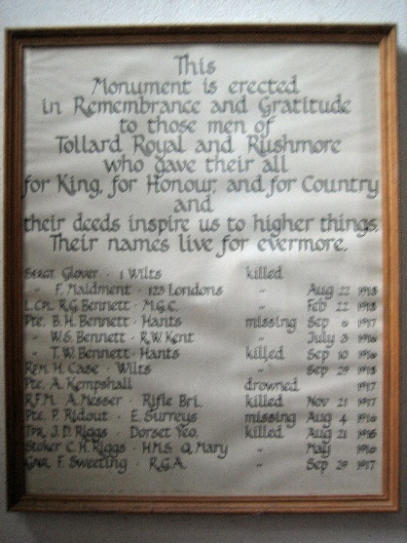



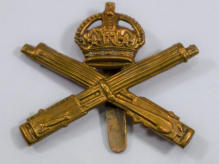

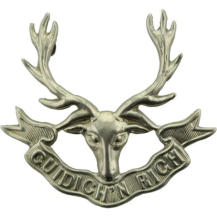



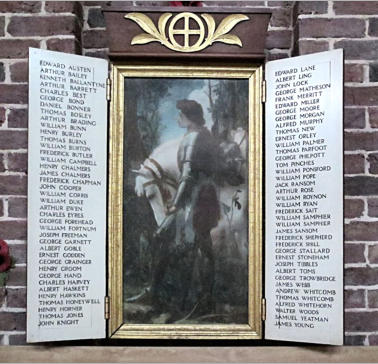



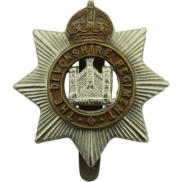

Dennis Bill 2024

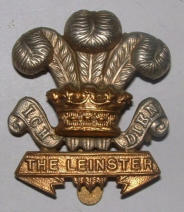
War Memorials Page
The four Bennett brothers - St Peter ad Vincula, Tollard Royal
